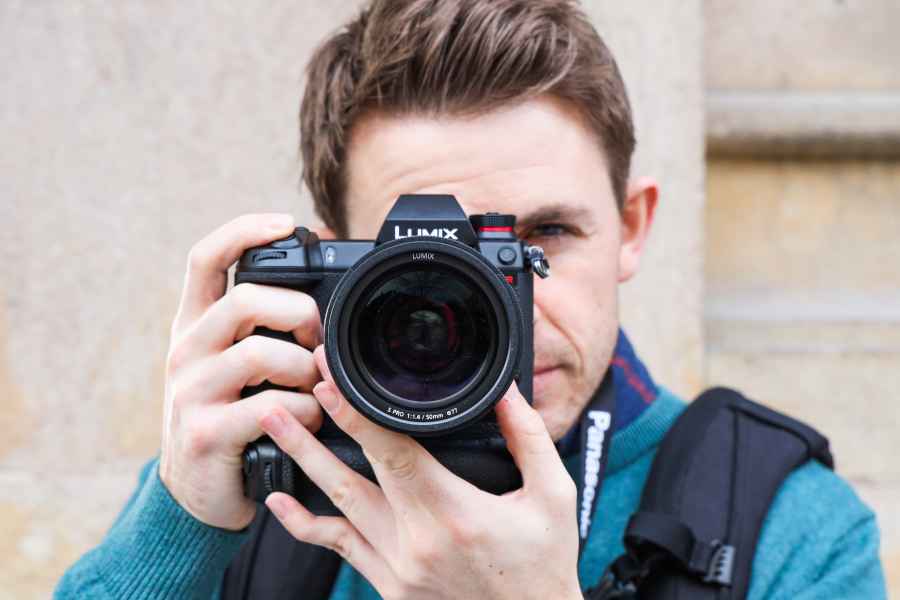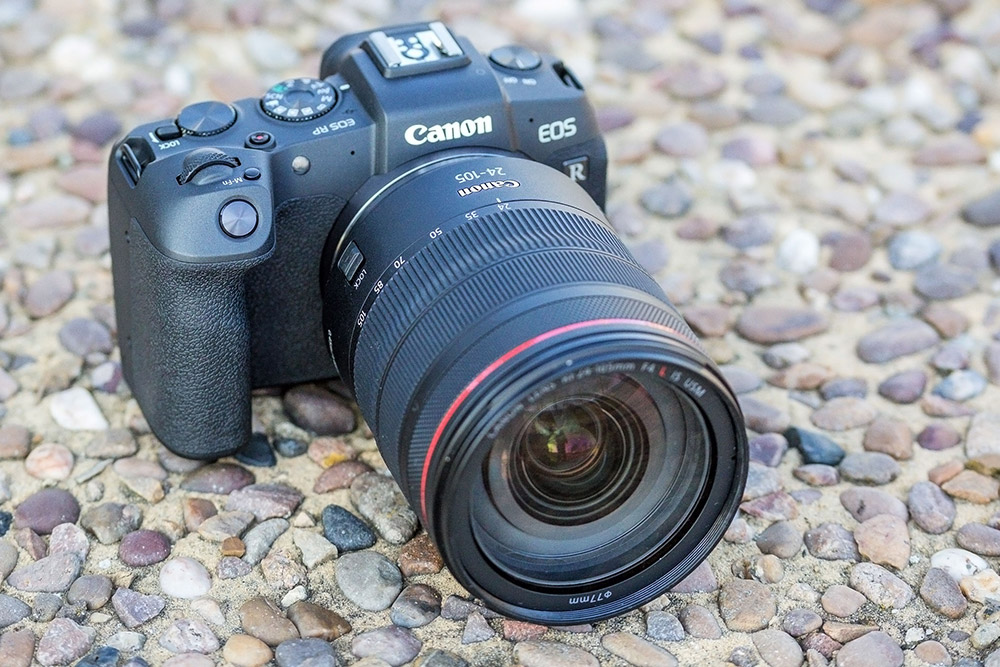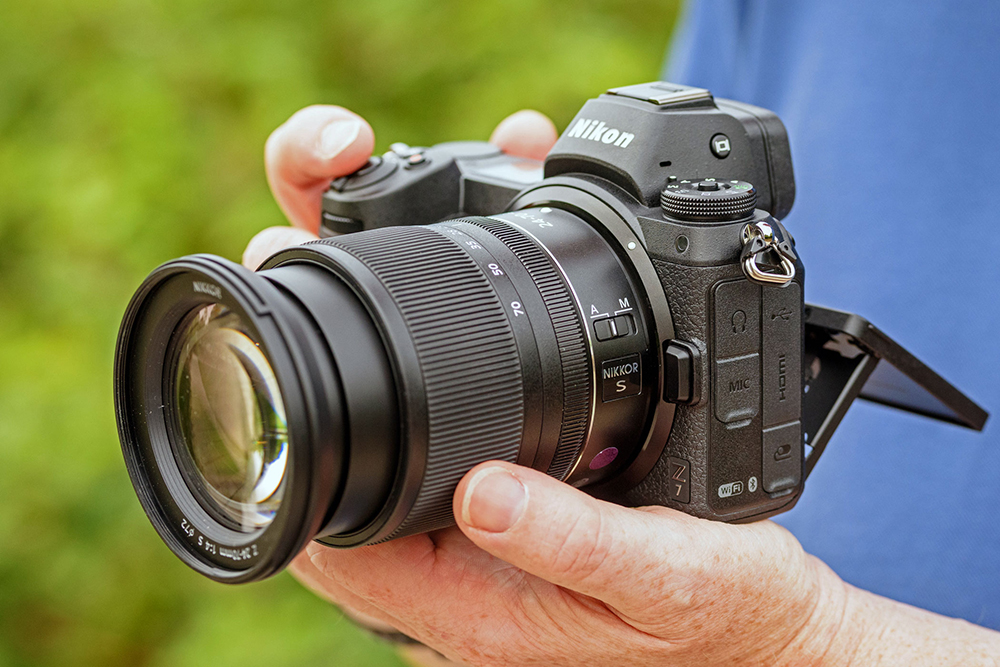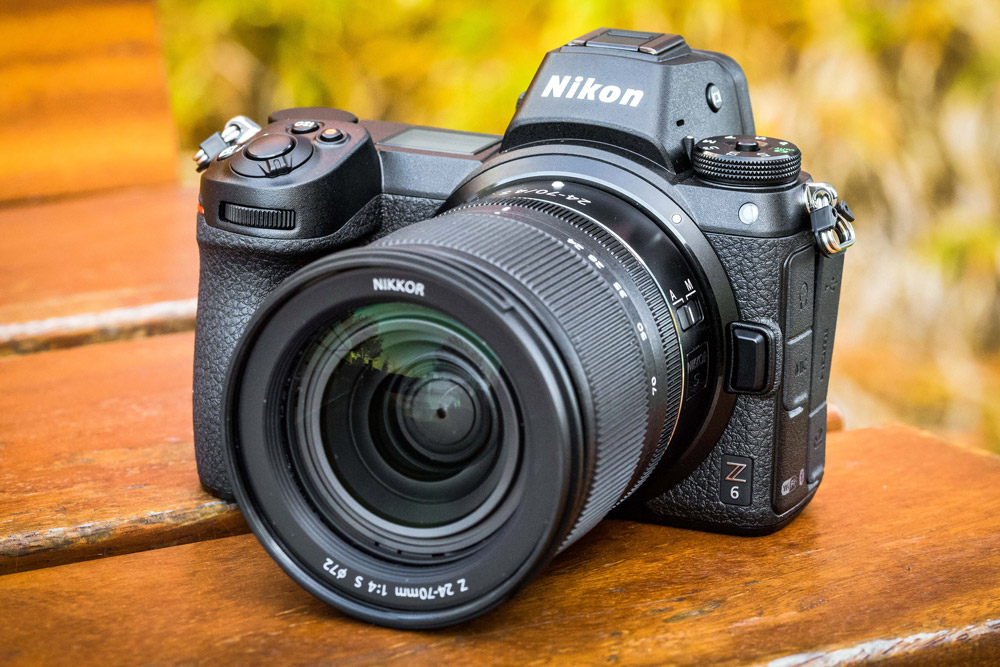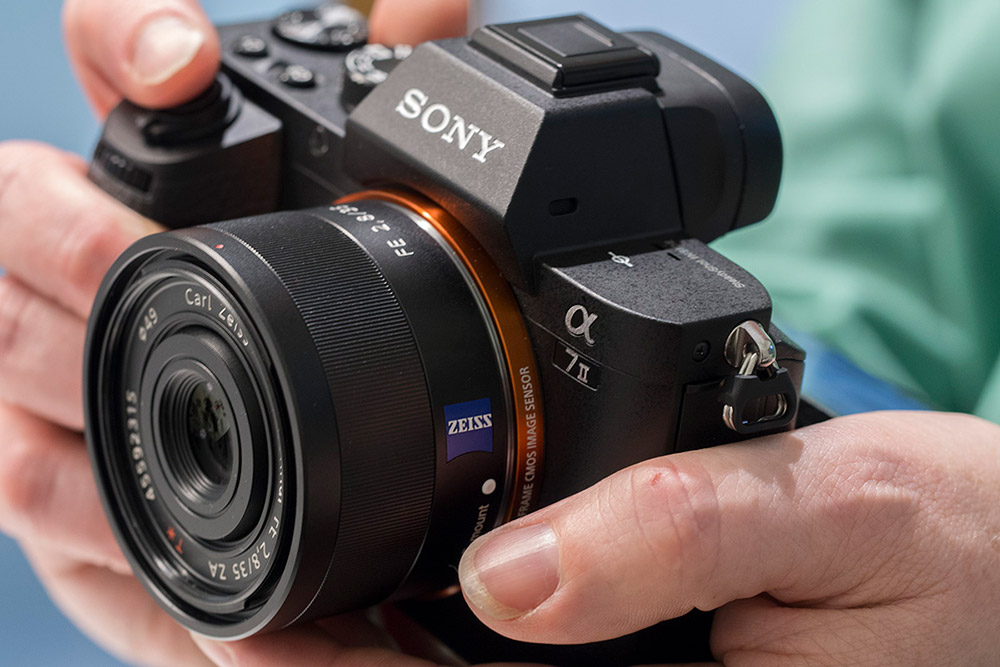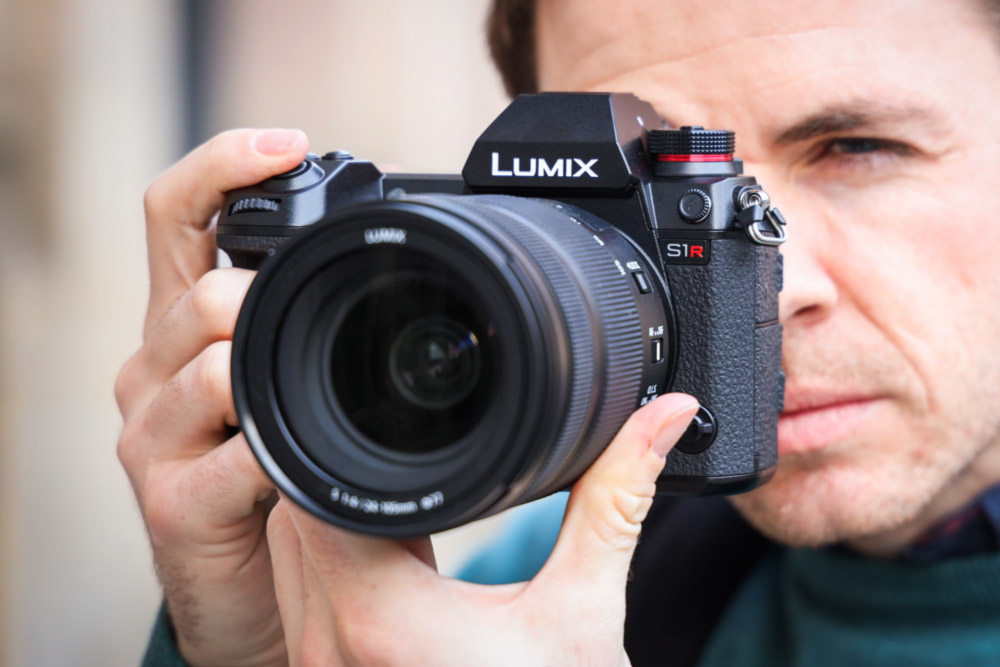Serious savings can be had for the best second-hand full-frame mirrorless cameras. We offer some recommendations.
Full-frame mirrorless cameras have been around long enough that there is now a large second-hand market for yesterday’s professional models – at realistic prices for the enthusiast. Whether you’re looking for top-end resolution, super-charged burst rates, next-level autofocus or whatever else, there will be a full-frame mirrorless camera for you.
The second-hand camera market is vast and tricky to navigate. This shortlist of picks provides some pointers for those in the hunt for used full-frame mirrorless models. We’ve selected cameras recent enough to offer a modern shooting experience, but established enough to have undergone a big price drop. Many on the list can be bought in excellent condition at around half their price at launch – or even less.
We focus specifically on full-frame mirrorless cameras here as this is where we expect photographers and videographers to find the most value. For other types of sensor and camera, find out more in our exhaustive guides to APS-C vs full frame and DSLRs vs mirrorless.
All the cameras on this list are ones we’ve tested, reviewed and obsessed about extensively, so rest assured that our recommendations are objective and thorough. We never endorse cameras we feel are not worth their asking price.
We go into more detail on how to choose the best second-hand full-frame mirrorless camera at the bottom of the page, so head there first if you need a primer.
Here’s a quick glance at the best second hand full-frame mirrorless cameras in this article:
Looking for the best deal on second-hand mirrorless cameras? Not only will you find the best second hand cameras, but also some of the best cheap deals, as our ‘Buy now’ buttons are setup to automatically take you to the best prices from trusted retailers. There is also a list of other retailers below each camera, so you can find the right deal for you.
- Best used Canon mirrorless: Canon EOS RP – Buy now
- Best second hand mirrorless camera for Landscape photography: Nikon Z7 – Buy now
- Best second-hand all rounder camera: Nikon Z6 – Buy now
- Best second hand full frame Panasonic camera: Panasonic Lumix S5 – Buy now
- Smallest second hand mirrorless camera: Sigma fp – Buy now
- Cheapest used full-frame mirrorless: Sony Alpha A7 II – Buy now
- Best second-hand high resolution Panasonic camera: Panasonic Lumix S1R – Buy now
Why you can trust Amateur Photographer…
We spend many hours testing every product we recommend in detail and in a variety of situations and shooting scenarios. We only use experts for our reviews, so you can be sure that you’re getting the best products. Find out more about our expert writers.
Best used Canon mirrorless: Canon EOS RP
Amateur Photographer verdict
Streamlined, easy-to-use control layout with plenty of customisation- Well-integrated touchscreen interface
- Compatible with EF-mount SLR lenses via supplied adapter
- Fully-articulated screen affords extra compositional flexibility
- No in-body image stabilisation
- Viewfinder visibility is poor in bright light
At a glance
- 26.2MP full-frame dual-pixel CMOS sensor
- ISO 50-102,400 (extended)
- 5 frames per second shooting
- 2.36m-dot EVF, 0.7x magnification
- 3-in, 1.04m-dot fully articulated touchscreen
- around $800 / around £600
The EOS RP was Canon’s second full-frame mirrorless camera after the original EOS R and remains the entry-level offering in the firm’s line-up. Weighing in at less than 500g (body-only), it’s one of the most compact full-frame cameras available. At the time of its launch, Canon made a great play of the fact that it was smaller and lighter than the EOS 800D APS-C DSLR.
Shop around and you should be able to find one in good second-hand condition for around £850, representing a healthy £200 saving over its current new price. If you’re a Canon DSLR user interested in buying into full-frame mirrorless while using your existing lenses, it’s by far the most affordable option.
Canon built the RP around the same 26.2MP full-frame sensor as its EOS 6D Mark II DSLR, with the firm’s unique Dual Pixel AF enabling rapid and accurate autofocus across the entire image area. Its standard sensitivity range covers ISO 100-40,000, expandable to ISO 50-102,400, and the camera can shoot at five frames per second. 4K/25p video recording is available, but with a significant 1.6x crop. Full HD covers the full width of the frame.
You get a 2.36m-dot electronic viewfinder for composing images, with a reasonable 0.7x magnification that also provides an accurate preview of colour and exposure. It’s complemented by a fully articulated touchscreen that facilitates shooting at unusual angles in both landscape and portrait formats. Every aspect of the camera’s operation can be controlled by touch, which helps to make up for a fairly limited set of physical controls.
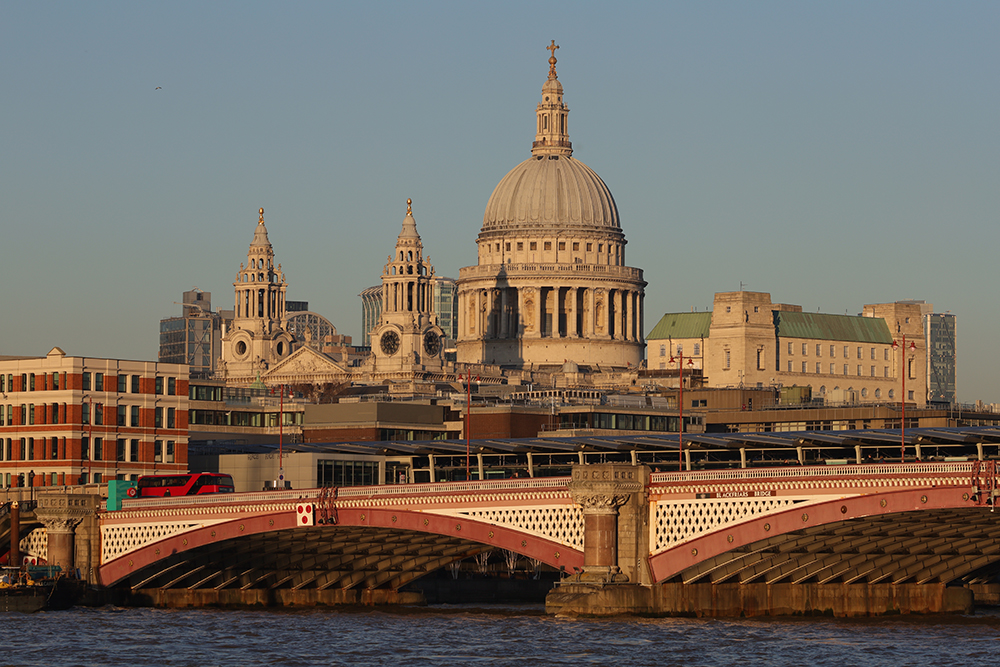
Lightweight RF lenses
When the EOS RP was originally launched, it didn’t seem to make much sense, as Canon only made one RF lens that matched its compact frame and price point. But since then, the firm has produced a set of optics that place it an entirely new light. Now, you can match it up with an array of lightweight and reasonably affordable RF lenses, including the 24-105mm F4-7.1 IS STM ($429 / £479), 100-400mm F5.6-8 IS USM ($699 / £699), 50mm F1.8 STM ($135 / £209) and 85mm F2 IS Macro STM ($649 / £619).
For those who’d like an all-in-one travel zoom, there’s also the 24-240mm F4-6.3 IS USM ($979 / £969). For nature lovers, Canon makes a pair of unusually small ultra-telephotos, the 600mm F11 IS STM ($879 / £879) and 800mm F11 IS STM ($1,100 / £1,100). With these lenses now available, the EOS RP becomes a much more interesting proposition as the basis of a lightweight full-frame kit.
EF adaptor
Canon DSLR owners can continue to use all their existing EF-mount lenses with full functionality, including image stabilisation and autofocus, via the Mount Adaptor EF-EOS R ($139 / £98). This is such a popular approach that Canon has struggled to keep up with demand, with the adaptor’s availability being notoriously patchy; it’s often out of stock for months. However, cheaper alternatives are available from the likes of Viltrox that appear to work perfectly well.
Best second-hand mirrorless camera for Landscape photography: Nikon Z 7
Amateur Photographer verdict
Excellent sensor provides stunning image quality under any lighting conditions- Superb viewfinder
- Effective 5-axis image stabilisation
- Fast, silent autofocus
- Plenty of F-mount lenses available via FTZ adapter
- Continuous AF and subject tracking slower than of its peers
- Single card slot that only accepts expensive XQD media
- Screen only tilts in one direction
At a glance
- 45.7MP full-frame BSI-CMOS sensor
- ISO 32-102,400 (extended)
- 9 frames per second shooting
- 3.69m-dot EVF, 08x magnification
- 2.1m-dot, 3.2in tilting touchscreen
- $1,300 / £1,000 second-hand
Nikon launched its full-frame mirrorless Z system with a pair of cameras that used the same body design but different sensors: the Z 6 and Z 7. The latter was the more sophisticated of the two, and these days it provides a relatively affordable route into high-resolution shooting.
Built around a 45.7MP full-frame back-illuminated sensor, the Z 7 is capable of delivering the same image quality as the D850 – arguably Nikon’s best-ever DSLR – in a much more portable package. But with five-axis in-body image stabilisation (IBIS) built in that works with every lens, it also allows photographers to gain the full benefit of all those pixels more easily when shooting hand-held.
Like the D850, the Z 7 is an impressive all-rounder capable of shooting at up to 9 frames per second at full resolution. On-chip phase detection supports 493 focus points arranged across 90% of the frame, and the standard ISO 64-25,600 range can be extended to ISO 32-102,400.
Nikon equipped the Z 7 with a superb electronic viewfinder that’s still one of the best you’ll find. It’s large and detailed, with 3.69m-dot resolution, 0.8x magnification, and a wonderfully clear live view feed that’s great for judging focus and depth-of-field. The LCD screen is a similarly excellent 3.2in unit and employs a dual-tilt design for high or low angle shooting, at least in landscape format.
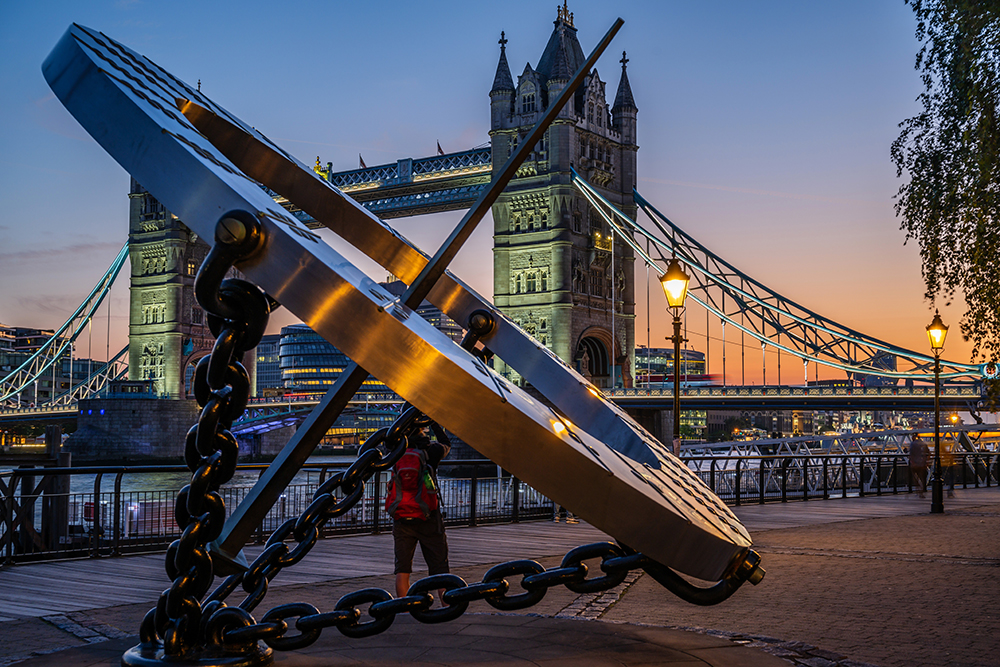
Lens options
To make the most of the Z system’s compact size and weight, Nikon adopted a slightly different approach to building up its lens range compared to its F-mount DSLR line-up. Premium optics are given the ‘S’ designation and include both f/2.8 and f/4 zooms, along with a set of fine f/1.8 primes ranging from 20mm to 85mm. There’s also a small but developing range of affordable non-S optics.
Existing Nikon DSLR owners can also use their F-mount lenses via Nikon’s FTZ or FTZ2 adapters (the main difference being that the latter does without a tripod foot). Autofocus is available with AF-S and AF-P lenses that have built-in focus motors, but older AF D-type lenses require focusing manually. This is easy enough, thanks to the excellent viewfinder. Crucially, the in-body stabilisation works with every single lens and operates in tandem with those that include optical VR.
Media
Possibly the Z 7’s most controversial feature at launch was its reliance on a single card slot accepting XQD media, with no support for conventional SD cards. That’s been remedied in its successor with the addition of an SD slot, while a firmware update has added CFexpress Type B support to the Z 7. But chances are you’ll have to budget for a new memory card and reader, with XQD and CFexpress being expensive; expect to pay at least £100 for a card.
Best second-hand all rounder camera: Nikon Z 6
Amateur Photographer verdict
An astonishingly impressive camera for the money and the full-frame camera to go for if you don’t require the Nikon Z 7’s super high resolution output.- Exceptional high ISO performance
- Robuust build quality
- 4K video
- 12 fps burst shooting
- Single XQD card slot
- Screen only tilts
At a glance
- 24.5MP full-frame BSI CMOS sensor
- ISO 50-204,800 extended
- 12 frames per second shooting
- 3.68m-dot OLED EVF
- 2.1m-dot tilting touchscreen LCD
- $830 / £710 second hand
The all-rounder to the Z 7’s high-resolution specialist, the Nikon Z 6 is a speedy camera that can these days be picked up for less than half the original ticket price. In our opinion, that’s a really good deal, and it’s a great entry point to the Z system if a second-hand Z 7 is beyond your means. However, this is not simply an inferior version of the Z 7 and actually surpasses it in certain specs, most notably its faster burst rate, which can go as high as 12fps.
Full-frame mirrorless cameras are often quite specialised, and we think the Z 6 is still one of the best general-purpose full-frame mirrorless cameras around. It goes toe-to-toe with the Sony A7 series in that respect, and it outstrips that camera on several levels, largely thanks to its superior build quality. It just feels like a better-made camera than the contemporaneous Sony A7 III, with better handling and ergonomics.
Impressive high-ISO performance
The fact that the Z 6 has fewer photosites crammed onto its full-frame sensor means that it can achieve better high-ISO performance compared to its sibling, the Z 7. It can take its ISO performance as high as 51,200 natively, and as high as 204,800 in the expanded settings. Granted, the top-end of ISO settings don’t tend to actually get used by many people for serious shooting, but a rising tide lifts all boats, and the Z 6’s ISO performance is accordingly very impressive throughout the range.
The sensor has a back-illuminated structure, which further improves the low-light performance. Also, in another breakaway from the Z 7, it has an optical low-pass filter to help deal with unwanted moiré patterning. Having 5-axis optical stabilisation is helpful in low light, too. It corrects not just for pitch and yaw, but also for rotation around the lens axis, which is a boon for shooting handheld video.
The card slot thing, again
Unfortunately, Nikon’s single-XQD-slot mistake was not confined to the Z 7, and the Z 6 has the same requirement for recording and storing media. It’s not the end of the world, but it’s definitely irritating, especially since the XQD card you’ll have to buy for it will likely never be used again the instant you upgrade to another camera. That’s really our only strike against this excellent full-frame mirrorless camera.
Best second-hand full frame Panasonic camera: Panasonic Lumix S5
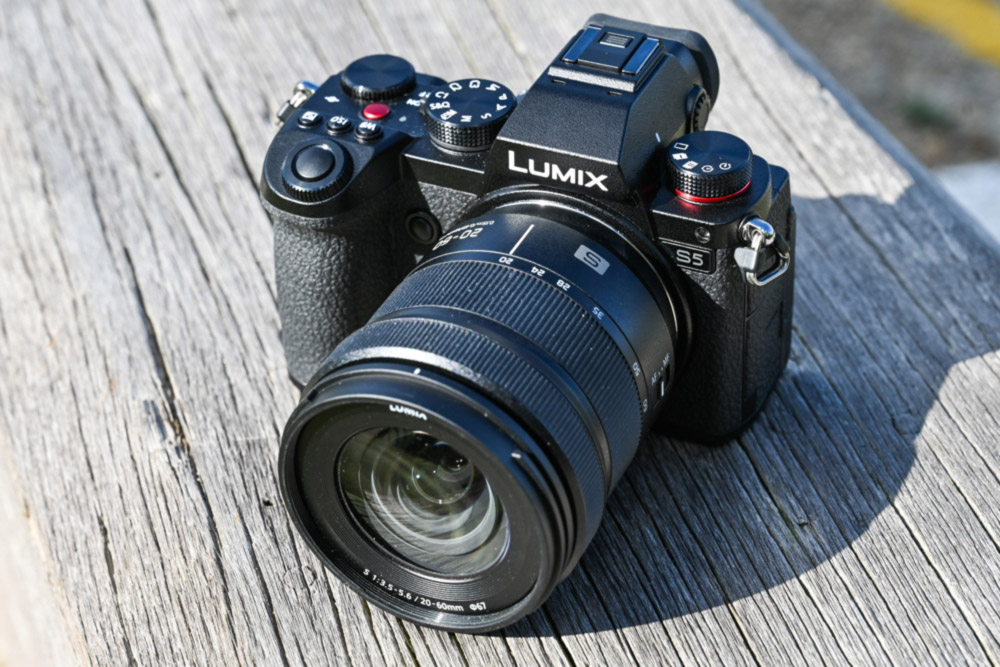
Amateur Photographer verdict
A practical all-rounder in terms of its size and weight and enjoyable to use. A good alternative to some of the other fine full-frame mirrorless cameras out there- Smallest, lightest Panasonic full-frame camera
- Excellent handling and controls
- Rugged, weather-proof body
- Wide range of video options
- Only one high-speed card slot
- Some controls feel plasticky
At a glance
- 24.2MP full-frame CMOS sensor
- ISO 50-204,800 (extended)
- 7 frames per second shooting
- 2.36m-dot EVF, 0.74x magnification
- 3in, 1.84m-dot fully articulated touchscreen
- Around $1,000 / £700 second-hand
Released towards the end of 2020, Panasonic’s mass-market full-frame mirrorless model is aimed at those who enjoy shooting moving images just as much as stills. It’s a nicely designed camera that manages to be smaller than the firm’s popular Micro Four Thirds GH5, despite having a sensor four times the size. It employs the L mount originally developed by Leica, which means it’s compatible with a good range of lenses from Panasonic, Leica and Sigma. It has since seen an upgrade in the form of the Panasonic Lumix S5 II, which should mean the price of this model comes down still further on the second-hand market.
Like many of its peers, the S5 is based on a 24MP full-frame sensor. It offers a standard ISO range of 100-51,200, expandable to 50-204,800, and is capable of shooting at 5 frames per second with continuous autofocus, or 7fps with focus fixed. In addition, 5-axis in-body stabilisation is built in to keep images sharp and video footage steady.
Below the 2.36m-dot EVF there’s a fully articulated screen, which represents a welcome advance over the tilt-only screens used by many of its competitors. Not only does it aid with shooting at high and low angles for both horizontal and vertical formats, but it can also face forwards for vlogging.
On that note, the S5 boasts impressive video credentials. It’s capable of recording in 4K at 60fps with 4:2:0 10-bit colour using an APS-C crop, or at 30fps with 4:2:2 10-bit colour from the full width of the sensor. There’s no time limit when recording 4K 30p/25p 4:2:0 8-bit internally, while 4K 60p 4:2:2 10-bit output is available via HDMI. Plenty of advanced video features are on hand, too, including V-log pre-installed, 4K HDR, and raw output over HDMI at 5.9K 50p.
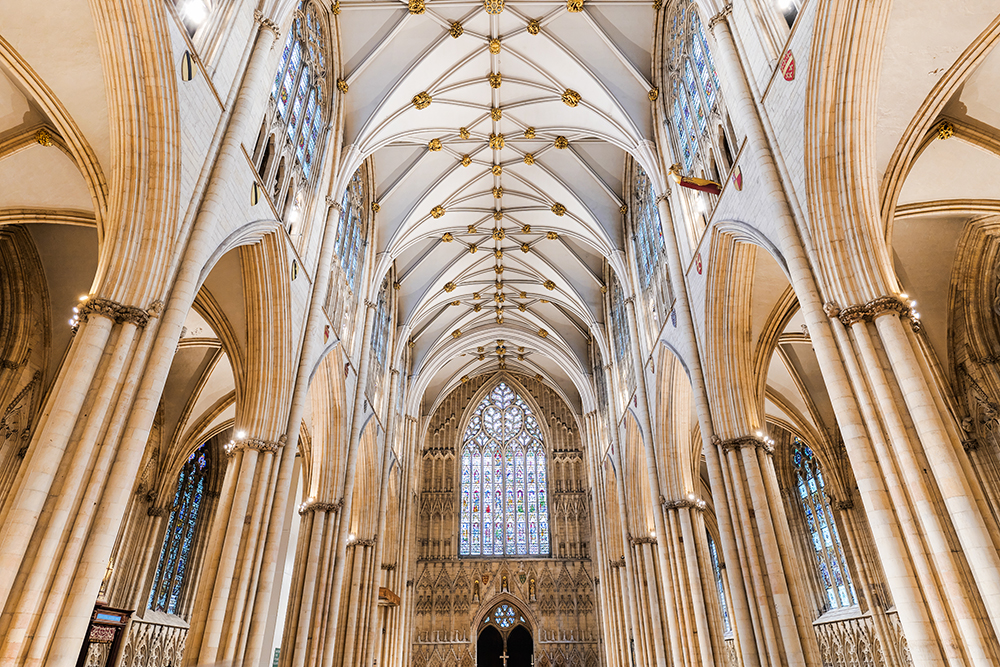
Photo friendly, too
While there’s certainly a perception that Panasonic is now focused mostly on video, the S5 offers an awful lot for stills photographers too. It handles very nicely, with all the key controls placed at your fingertips, and a huge amount of user-customisation is available. As a result, it’s a very enjoyable camera to use.
You get crisp, detailed images at low ISO settings, with file remaining perfectly usable up to ISO 12,800 at least. One particularly notable feature is the 96MP high-resolution multi-shot mode, which is unique on a full-frame camera at this price point. The in-camera processing is speedy and does a good job of detecting and suppressing blur when it detects slight movement in the scene.
Unique kit zoom
One of the most interesting aspects of Panasonic’s approach to the S5 is its unique kit zoom, the Lumix S 20-60mm F3.5-5.6. While its unusually wide view is undoubtedly aimed at vloggers recording themselves at arm’s length, it should also appeal to photographers shooting architecture and landscapes.
At $598 / £479, it’s much more affordable than adding a specialist wideangle zoom to your kit. Paired with the Lumix S 70-300mm f/4.5-5.6 Macro OIS ($948 / £799), it should also make an excellent lightweight travel kit. Panasonic also offers a range of small and relatively affordable f/1.8 primes.
Read our Panasonic Lumix S5 review
Smallest second-hand mirrorless camera: Sigma fp
Amateur Photographer verdict
One of the smallest and most lightweight full frame mirrorless cameras out there- Excellent build quality
- Well-designed user interface
- Impressive image quality in raw
- No viewfinder or tilting screen
- Sluggish touchscreen AF-area selection
- No smartphone connectivity
- Limited lens availablity
At a glance
- 24MP full-frame CMOS sensor
- ISO 6-102,400 (extended)
- 18 frames per second shooting
- Optional bolt-on EVF-11 viewfinder
- 3.1in, 2.1m-dot fixed touchscreen
- From around $1,500 / £1,150 second-hand
The Sigma fp is a camera unlike any other. By stripping out all but the bare essentials, the firm has made the smallest full-frame model currently available. The result is a departure from the mainstream and comes with some significant compromises. But nothing else can offer full-frame image quality and interchangeable lenses in such a portable package.
In essence, the Sigma fp is a rectangular box measuring 113 x 70 x 45.3mm that houses a 24MP full frame sensor, with an L mount at the front and fixed 3.2in touchscreen on the back. There’s no built-in viewfinder, no mechanical shutter, and not even a handgrip. But the design is modular, so you can bolt a handgrip on one side and the optional EVF-11 on the other, if you like. I’d certainly recommend the small HG-11 grip.
The fp offers a standard sensitivity range of ISO 100-25,600 that’s expandable to ISO 102,400 at the top end. But in one of several unique ideas, expanded low sensitivities down to ISO 6 are also available, using a multi-frame approach that adds together multiple ISO 100 exposures. This ideally needs a tripod and is prone to ghosting effects when moving subjects are in the frame, but when everything works out, you can get fantastic results.
With no mechanical shutter, exposure time is set entirely electronically. While there’s some risk of rolling shutter distortion with fast-moving subjects, for the most part this works fine, and much better than on the camera’s high-resolution sibling, the Sigma fp L. There’s no in-body stabilisation, though, and only a few L-mount lenses include optical stabilisation.
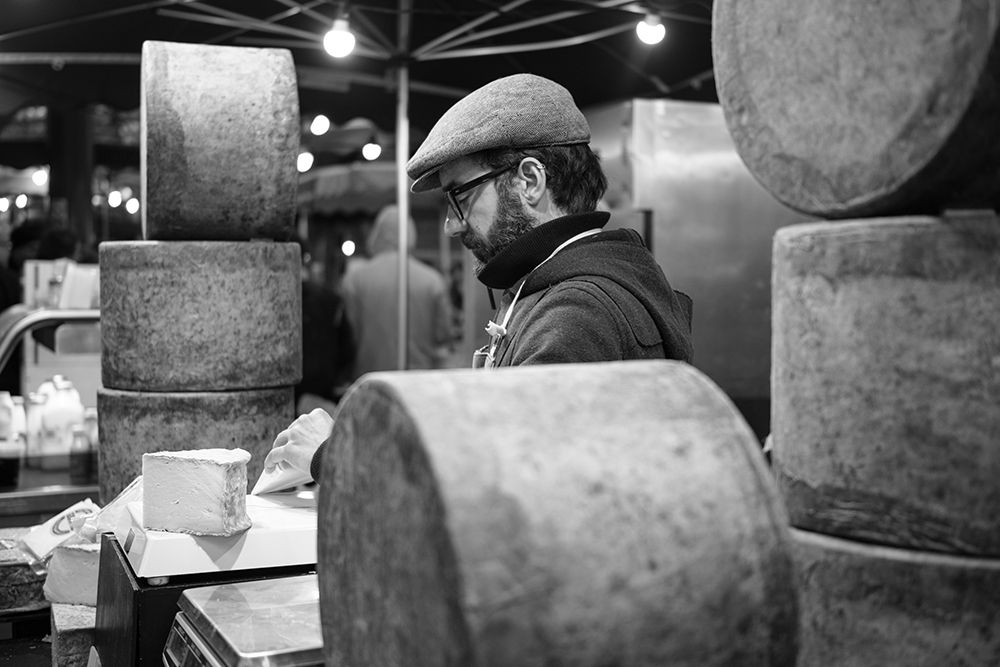
Little camera, big results
What you can’t argue about is the image quality that the fp can provide. With no optical low-pass filter, the sensor records plenty of detail, and at low ISO it’s possible to pull up three or four extra stops of detail from shadow regions without noise being a problem. When light levels drop, it’ll deliver eminently usable results up to ISO 12,800 at least.
Ultimately, the Sigma fp has an undeniable charm as a small camera that works nicely with compact lenses and is a lot of fun to shoot with. This makes it an intriguing alternative to its larger SLR-shaped rivals for those seeking full-frame quality in the smallest possible package.
Sigma i-series lenses
While you can use the fp with any L-mount lens, it’s arguably best suited for use with the firm’s compact i-series primes, which boast premium metal construction complete with analogue aperture rings. The 45mm f/2.8 is the perfect companion for everyday shooting, complemented by the 24mm f/3.5 wideangle and 90mm f/2.8 telephoto.
For those who prefer larger apertures, 24mm, 35mm and 65mm f/2 optics are also available. Meanwhile, if you can’t live without a zoom, Sigma makes the 28-70mm F2.8 DG DN that’s considerably smaller and lighter than its 24-70mm sibling.
Cheapest used full-frame mirrorless: Sony Alpha A7 II
Amateur Photographer verdict
Produces superb image quality in bright light and low light when the ISO has to be raised. Gives huge imaging potential in a lightweight body.- 5 axis in-camera image stabilisation
- OLED electronic viewfinder
- Easy handling
- Loud shutter and no silent mode
- Movie record button could be better positioned
At a glance
- 24MP full-frame CMOS sensor
- ISO 50-25,600 (extended)
- 5 frames per second shooting
- 2.36m-dot EVF, 0.71x magnification
- 1.23m-dot tilting LCD
- $800 / £520 second-hand
Sony’s Alpha 7 range is the longest-running full-frame mirrorless line-up of all, which means that there’s a bewildering array of models available second-hand across a wide range of price points. The high-resolution A7R range is of particular interest to studio and landscape shooters, while the 12MP A7S models are prized by videographers. In between, the ‘basic’ Alpha 7 line represents all-rounders aimed at enthusiast photographers.
While the original Alpha 7 from 2013 has a certain charm and can be found used for under £500, we’ve chosen to highlight its successor that appeared just 13 months later. The Sony Alpha 7 II brought major improvements in handling, including improved control dials and a larger, more conventional handgrip, while also introducing 5-axis in-body image stabilisation to Sony’s mirrorless line-up.
You can pick up used models in excellent condition for several hundred dollars and pounds less than its much-feted successor, the A7 III.
While its spec may look a little dated by modern standards, the A7 II still has plenty to offer. Its 24MP sensor offers excellent image quality at low ISO settings, with particularly impressive dynamic range, while providing a sensitivity range up to ISO 25,600. Continuous shooting runs at 5 frames per second and there are 117 autofocus points to choose from covering almost the entirety of the image area.
However, only the central region provides faster phase detection AF. The 2.36m-dot viewfinder is joined by a 3in screen that tilts up and down, but doesn’t offer touch functionality. Typically for its vintage, only Full HD video recording is available.
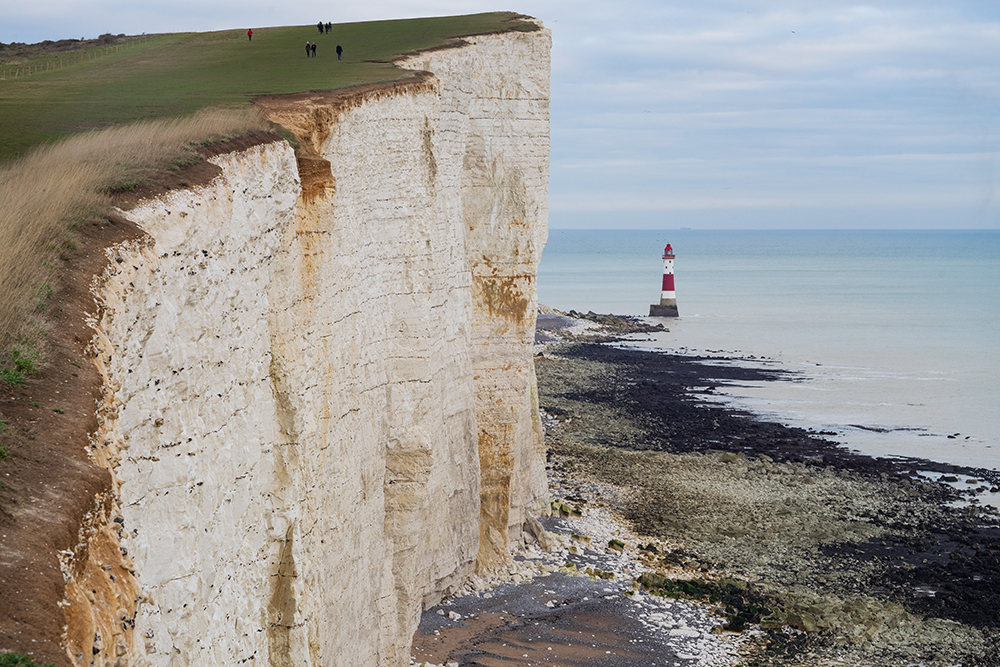
Small and light
While the A7 II isn’t quite as lightweight as either its predecessor or the Canon EOS RP, mainly due to the addition of IBIS, it’s still pretty petite in full-frame terms. It’s noticeably lighter than later models, too, although in part this is due to the small and rather underpowered NP-FW50 battery. I’d budget on acquiring a few spares; thankfully third-party options are cheap and easy to find.
Overall, the Sony A7 II brings a lot to the table for photographers at a very attractive price. It certainly has its foibles, but given its excellent raw image quality and compact size, they’re easily forgiven.
Any lens you like
Like all E-mount cameras, the A7 II can make use of a vast array of lenses. Not only is Sony’s FE range larger than rival line-ups, plenty of third-party options are also available, from small, affordable Samyang primes through to sublime lenses from Zeiss. In between, Sigma and Tamron both make excellent optics at competitive prices.
It’s even possible to get electronic adapters for Canon EF-mount lenses, although they don’t work as well as on Canon’s EOS R cameras. Last but not least, the A7 II is an excellent vehicle for shooting with vintage manual optics from old 35mm film cameras via mount adapters.
Read our Sony Alpha 7 II review
Best second-hand high resolution full-frame camera: Panasonic Lumix S1R
Amateur Photographer verdict
Delivers top notch image quality and highly effective image stabilisation in a robust, well built body, however, it’s on the heavy-side compared to its counterparts- Amazingly detailed images
- Superb electronic viewfinder
- Effective IBIS
- Rugged, pro-level build quality
- As large and heavy as a full-frame DSLR
- Slow autofocus in poor lighting
At a glance
- 47.3MP full-frame CMOS sensor
- ISO 50-51,200 (expanded)
- 9fps continuous shooting
- 5.76m dot EVF with 0.83x magnification
- 3.2in, 2.1-million dot triaxial tilt LCD touchscreen
- around $1,649 / £1,079 second-hand
Originally released in 2019 for a list price of $3,600 / £3,400, the Panasonic Lumix S1R can these days be picked up second-hand for around $1,650 / £1,100. That’s a pretty significant four-figure saving on a camera that, in the grand scheme of things, really isn’t that old. And given that the L-mount lens range has spent the past four years steadily growing, the Lumix S1R has an advantage now that it did not have when it was new.
[At the time of writing, this camera is scarce in the USA, and represents less value at available prices]
With a 45.7MP sensor, the Lumix S1R isn’t technically the highest-resolution camera on the block, but it’s still very much in the conversation – and that’s still a lot of pixels. Like many contemporary cameras, it also offers a super-high resolution composite mode, which uses the in-body image stabilisation system to craft images with a whopping 187MP resolution. Elsewhere, you’ve got solid specs across the board, with 9fps continuous shooting and a respectable ISO range that retains decent image detail up to 12,800.
The image quality achieved by the Lumix S1R impressed us then, and impresses us now. It does without an anti-aliasing filter in order to maximise image sharpness. Dynamic range is generally excellent – we did a close inspection of RAW files in our review and the amount of recoverable detail in the deepest shadows of images was very good indeed.
The autofocus system on the Lumix S1R is Panasonic’s tried and tested contrast-based Depth from Defocus, which is generally fine – as long as you’re in good light. Start shooting in a gloomy setting with less than ideal conditions, and you can expect the focus system to start hunting, and the bright orange AF assist beam will draw the wrong kind of attention in the room.

Bigger = better?
The Panasonic Lumix S1R is large. With the camera body already weighing a substantial 1,020g, if you connect a full-frame lens like the Lumix S Pro 50mm f/1.4 (weighing in at 955g), you’ll have your hands full. Why so big, Panasonic? Perhaps an over-compensation following the perceived inferiority of the Micro Four Thirds Lumix G cameras. Regardless, Panasonic did shed a little after that: the Lumix S5 (which we’ll meet later on) and its successor the Lumix S5 II being less bulky.
Still, if you don’t mind a big-bodied camera, Lumix S1R does confer advantages. There is space for lots of nice big buttons and dials, the top-plate houses a mini LCD display, and there’s room inside for a 3050mAh battery. Put the S1R on power-saving LVF mode and it’s rated to for at least 1,100 shots. That’s much better than a lot of mirrorless contemporaries.
A beautiful view (finder)
It would be remiss of us not to mention one of the S1R’s most attractive features – its big, beautiful viewfinder. At the time of review, we described it as one of the most impressive we’d ever tested, and it’s still up there with the best. It was the world’s first 5.76-million-dot OLED EVF, with a 10.000:1 contrast ratio and practically non-existent lag time of 0.005secs.
There’s also no viewfinder blackout after the first frame, helping with tracking tricky moving subjects, and the default magnification can be reduced to make things easier for users with glasses. It is simply a delight to use, and a top-notch addition to what was already a very impressive camera. If you don’t mind a big system, the Lumix S1R is an excellent second-hand choice.
Read our full Panasonic Lumix S1R review.
Retailers to have a look at to find full-frame mirrorless cameras:
- www.camarthencameras.com
- www.cameraworld.co.uk
- www.cliftoncameras.co.uk
- www.ffordes.com
- www.lcegroup.co.uk
- www.mpb.com/en-uk
- www.parkcameras.com
- www.worldwidecameraexchange.co.uk
- www.wexphotovideo.com
- www.bhphotovideo.com (USA)
- www.adorama.com (USA)
You’ll find even more used kit bargains in our buying guides, or in our second-hand section.
How to choose the best second-hand full-frame mirrorless cameras
When picking a full-frame mirrorless camera on the second-hand market, consider which features and specs are most important to you. Some cameras specialise in resolution above all else, making full use of the luxurious sensor size to produce images of dazzling detail. Other users will be more interested in a fast burst rate for capturing action, or a high ISO ceiling for shooting in low light.
Much will depend on which lenses you are going to use. This is particularly relevant if you’re jumping onto full-frame mirrorless from another system like DSLRs, as you likely already have some lenses that you would rather keep.
If you’re using Canon or Nikon DSLRs, your path is easy, as both firms sell lens adaptors for their full-frame mirrorless systems (Canon EOS R and Nikon Z). These adapters don’t just let you physically fit the lenses, but also allow for full functionality with autofocus and stabilisation on the vast majority of them. This allows the migration from one system to the other to be gentle and gradual, rather than immediate and expensive.
However, Canon and Nikon are annoyingly precious about keeping their RF and Z mounts to themselves, so there isn’t much of a third-party lens market out there (options exist, but they’re manual focus only). Sony, by contrast, has been very generous with licensing its full-frame E-mount to third-party manufacturers like Tamron, Sigma and Zeiss.
So, if you pick up one of the Sony Alpha full-frame cameras, you’ll have a huge suite of optics to choose from. Even if you stick with Sony-made lenses, there are loads, as Sony gained a head-start of several years on the competition. The L-mount that’s used on Panasonic full-frame cameras, meanwhile, is part of an alliance with Sigma and Leica, so there’s plenty of choice there.
How we test cameras
We test cameras primarily by using them to take photographs and video in a wide range of real-world situations. We evaluate their control layouts and handling, and the usability of their viewfinders and screens. We assess their autofocus across a range of different subjects and shooting scenarios and check their continuous shooting capabilities.
We also examine the effectiveness of their image stabilisation systems. Last but by no means least, we critically evaluate the image quality, in both JPEG and raw, including resolution, high-ISO noise, and dynamic range. We then take all these factors into account, along with such things as portability and lens systems, when giving our final conclusion and score. You’ll find the full breakdown of how each camera has performed in our full reviews.
Further reading:
- Best second-hand camera systems for under $1000 / £1000
- Best used cameras and lens combos under $600 / £500
- 12 best second-hand classic compact cameras
- AP readers share experiences of buying used kit

